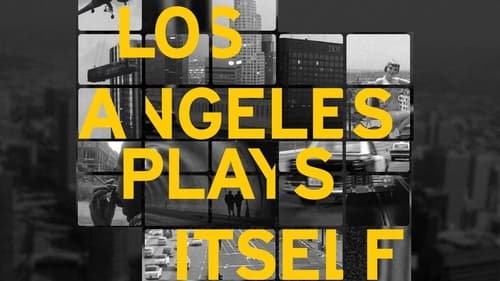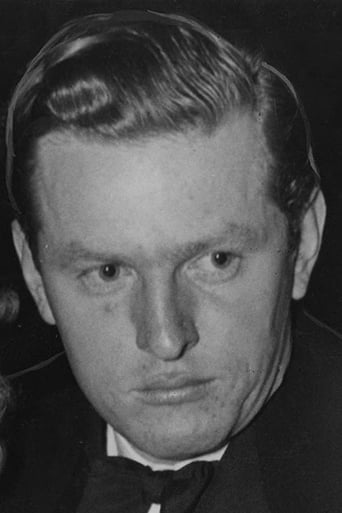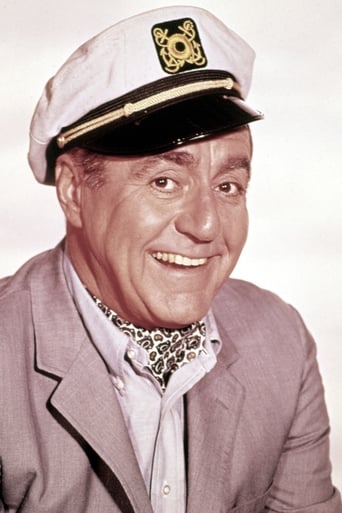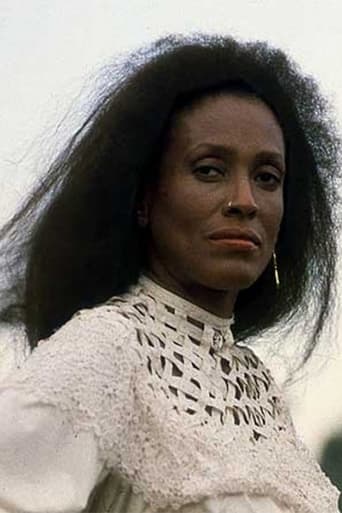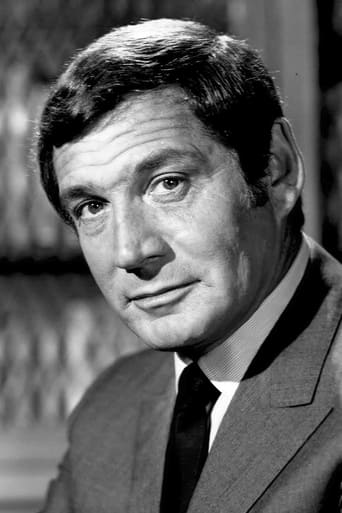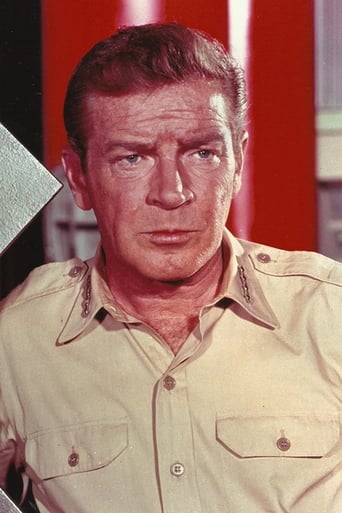Afouotos
Although it has its amusing moments, in eneral the plot does not convince.
Dynamixor
The performances transcend the film's tropes, grounding it in characters that feel more complete than this subgenre often produces.
Kien Navarro
Exactly the movie you think it is, but not the movie you want it to be.
Frances Chung
Through painfully honest and emotional moments, the movie becomes irresistibly relatable
whitesheik
I read with some amusement the reviews on this film, ranging from boring to brilliant. So, first things first - brilliant it's not. Good it's not. Boring? Sometimes, but that's not the point. Thom Anderson wasn't born here. He doesn't bother to tell us when he moved here. From his rambling, pretentious, pedantic and horribly written narration, spoken by a horrible narrator, he presents himself as a native, as someone who knows Los Angeles intimately. I don't think so, frankly.There's an interesting idea here - the Los Angeles of film, and the Los Angeles of now. But Mr. Anderson is so in love with himself and the sound of his own voice (and his narrator's) that what we end up with is a smarmy, not very smart documentary about - what? That's the problem. I don't think he has a clue as to what his own movie is ultimately about. His points are occasionally so obtuse that you sit there scratching your head as to what he's trying to say. He puts clips from two Hitchcock films that were shot in San Francisco. Really? And one in Paris? Really? I'm sure he thinks he's being deep and profound, but in both regards he'd be wrong. There are some decent clips here, and happily they've been cleaned up for the Blu-ray and taken from other Blu-ray hi-def sources, so they look much better than what was screened at the Egyptian (I was there). The final forty minutes or so, where he blathers on about completely unknown and obscure films that he's obviously in love with (given that he's a teacher of film theory, I'm sure he revels in such outré material), just devolves this film into complete and utter pointlessness. Worth it for some good clips, and a handful of interesting bits of information. It's okay to want to make a film all about yourself, but don't call it Los Angeles Plays Itself, call it Three Hours of How I Personally Feel About Los Angeles with Sidetracks to Other Pointless Topics. Then we know what we're getting.I cannot give it more than one star because it is such a missed opportunity for those of us who a) were born and raised here, b) know this city well, and c) love this city, especially its past, when it was one of the most unique cities in the world.
GreenDolphinStreet
It ever a movie illustrated the concept of "falling down", this is it. It started out with great promise, especially for me and my wife as native Los Angeles residents. We were interested in learning about what the locations were and possibly how they've changed. For the first hour or so, it was exciting to see period scenes from many common and obscure films, particularly from midcentury, when the city had so much more architectural integrity.The narration then gradually became more of a diatribe, since the author couldn't wait to enlighten the audience with his superficial left-wing take on everything. You've heard it all already, especially if you went through college in the 70s like we did. He even took offense at the use of the nickname "L.A." and took it to prove self-loathing! And that was early on. The narrator's sneering tone fit Andersen's text perfectly, a world-weary, disdainful drone that made us lose our will to live! The clips got worse, too -- less interesting, and much less scene-oriented than in the beginning. Wasn't that supposed to be the point of the film, from its title? As it progressed, it became basically a collection of climax cuts featuring special effects and violence. For example, if we hadn't already seen "LA Confidential", the few violent scenes he showed would have pretty much ruined any future viewing of the movie for us. Those scenes had nothing to do with Los Angeles playing itself. The movie completely loses its focus, and becomes unwatchable after the intermission. We, too, left early -- and angry at becoming the recipients of a sophomoric diatribe by what Sam Spade might have called a pocket-edition political desperado.If the Egyptian Theater had reflected some of this dominant quality of the film in their promotional literature, we would not have felt as betrayed by the unfortunate turn of this film. Rating for the first hour: a 9. After that: 1.
GRMacE
Much like the city under analysis, this film school project is without equal in many respects. However, just like Los Angeles, the warts make for less than a perfect experience.My posting is thoroughly biased since I am, like so many of the posters to IMDb, a Los Angeleno who loves this city. We get the joke about Los Angeles. We live it every day. Someone told me that you have to live here for seven years before you begin to peel back the image of the city and actually find there are people living here. Whether seven is the correct number, I can tell you that viewing this movie will speed up the process considerably.With the director's guidance, viewing various movie clips over the years is an enlightening experience. The emphasis is placed on the background of the shot, not the foreground actors. This proves to be liberating and an unexpected pleasure. The insightful voice over convinced me that they had done their homework. Even if you think you know a lot about this city, you will learn more in two hours than you would pouring over history books for a month.Then there is the third hour. Ouch. Feel safe to leave the theater after the intermission. All semblance of historical detachment is thrown out the window and it becomes a personal diatribe against perceived slights and his take on racial politics. I happen to agree with with many of his sentiments, but his language is equal parts preachy, treacle, and bombastic. Also, unfortunately, in many places just plain wrong. Statements are made as fact (without attribution) that are mere opinion. No voice is given to reasonable voices from any other source. It is, of course, the director's right to make a personal film and take any side he wants. Watching it is another thing all together.The other major problem is the video transfer. Many of the clips are clearly lifted from VHS tapes that have been in a library or video store just a little too long. Even the best of the film has a washed out look would probably not be as noticeable on a TV, but on a big screen, the effect will take you back a bit. Oh, did you notice the running time? Obviously one of the filmmakers heroes is Michael Cimino.In the end, the entire experience is well worth your time if you have any interest at all in Los Angeels/Urban America/Big City politics.Just somebody get him an editor. While you are at it, how about a fact checker.
Joe Stemme
In much the same spirit as Martin Scorsese's "Mio viaggio in Italia" (1999), Thom Andersen's "visual lecture" on his native Los Angeles is a very personal journey. Because of rights issues involved in procuring clips from dozens and dozens of films, this project is unlikely to ever be seen outside of Museums, Cinemateques, and 'academic' settings, so you will have to actively seek it out if you want to see it. It is worth doing so - with reservations.Because it is such a personal odyssey, nobody is likely to agree with all of it, and that would suit Director Andersen just fine. I guess I could be categorized as a "tourist who stayed" in the vernacular of Andersen's thesis. I grew up in Boston, and moved to Los Angeles in my early 20's. Therefore, MY LOS ANGELES is different from Andersen's. I don't get my back up when the city is referred to as "L.A.", but Andersen pointedly does. He finds it a derogatory and dismissive term that is used as a weapon by outsiders and tourists. As local film critic Andy Klein points out, Americans don't seem to have the same issue when it comes to the abbreviation "U.S.A.", so why is "L.A." so offensive? And, though many locals DO object, "Frisco", "D.C.","NYC", "SLC"and other similar abbreviations are becoming more and more common in our less literal society.Some of the clips which Andersen employs last only a few seconds - acting as veritable Still Photos of certain views of the city (representing a variety of eras as well). Andersen is laudably conscientious in identifying ALL the clips used (sometimes this is a distraction; especially in those briefest of shots). Oddly, the brevity of those shots actually spurred me to wish the film were EVEN LONGER (the most common criticism of the film is that it is too long as is). Still, by the end, a remarkable portrait of a city does emerge. But, being the home of "Hollywood" (a term which also rankles Andersen - especially when it is used interchangeably with the main city itself), Los Angeles doesn't seem to exist in the world's eyes as separate from the Film Industry.The biggest problem with the film is the narration (not Andersen's voice as others have often mentioned). Andersen is given to make sharp declarative sentences, that are too often contradicted not only by reality - but by the clips in his own movie! For instance, he makes a point about the haze over the city and declares that films ALWAYS have a gauzy look when showing Los Angeles - then provides clips which show the sharp sunny vistas (think BAYWATCH) that attract hordes of visitors and tourists. More problematically, Andersen is a 'neighborhood' guy who not only derides Hollywood, but seemingly anywhere west of Vine. For someone who is declaring love for his native city, it is odd that he dismisses vast swatches of it! Curious too, is that Andersen knowingly adopts the view of "outsiders" to the city (and the film industry) as he levies specious arguments to why "Hollywood" is so phony in its depiction of the city. Andersen certainly is better informed, but feigns ignorance to make his point.The final portion of the movie brings Andersen's agitprop view into focus. To Andersen, racism is the dark underside of Los Angeles. As a so-called 'liberal Westsider', I have sympathy with much of what Andersen espouses (especially his parsing of the term "Nobody walks in L.A."), but it changes the focus of the film (not to mention the explosive and divisive use of a term like "genocide" to define public policy). Again, one wishes the film were longer in order to explore some of these issues touched upon. Also, Andersen should have done another pass in the editing room. Not in terms of length, but in terms of some of the obvious contradictions in his narration vs. reality/movie clips. And , a cheap shot at George Kennedy (obviously an attempt to inject humor in the dry commentary) is not worthy of such a high-minded project (curiously, Andersen misses an opportunity to needle Kennedy again in a later BLUE KNIGHT clip). On a technical note, I must say I was disappointed that it is a Video Production (as many of the most extraordinary pieces of Cinematography are marred by a fuzzy video-dupe look) -- all the while understanding the financial and logistical reasons it is so.

